 |
|
I would like to expand this page in the near future. In doing so, I would like to create individual "sub-pages" for each country or international telephone system based on input from my international visitors. I have had visitors from Australia, Ireland, the Netherlands, and others contact me about expanding my coverage beyond the boundaries of the USA where this web site is based. I am anxious to do this and welcome input from anyone outside of the USA and Canada for contributions of historical, technical, corporate, or the social impact of telephones and telephone systems in your country. This can be photos of your telephones, schematics, explanations of your switching systems (as in the case of the section on Ireland below), sound files of your dial tone, busy signals, etc. Please send file attachment e-mail to me. Also, if you find any errors on this page, please notify me as I am not knowledgeable about non-USA telephones and can use all the help I can in correctly identifying international telephones. Thanks! Please check out my Telephone Museums page for some interesting web sites of telephone museums from around the world. Someone sent me some photos of those famous red payphone booths in the United Kingdom complete with "call girls" as you can see in the following two photos: PHOTO 1 - PHOTO 2. Perhaps if we had these models adorning our phone booths here in the USA the payphone business wouldn't be struggling so much and companies like BellSouth wouldn't be getting out of the payphone business! :-) Russian Telephones - this section contributed by Anton My name is Anton. I'm telephone hobbyist living in Russia. In the first picture you can see an old AMT payphone, 1960. Instructions at the top: "Insert a coin. Take the receiver. Wait for dial tone. Dial a number." Instructions below: "For emergency call services without coin dial: fire - 01, police - 02, ambulance - 03". In the second picture is a Moscow payphone which had been used in the 1930s.
Next picture is a model of 1970's, AMT-69. It was most widespread payphone in 70's-80's. You can find that phones yet in some province places and rural areas. This picture is with opened front door. Note the card with electric circuit schematics at inside part of the door.
Unfortunately I didn't find the picture of normal closed payphone. 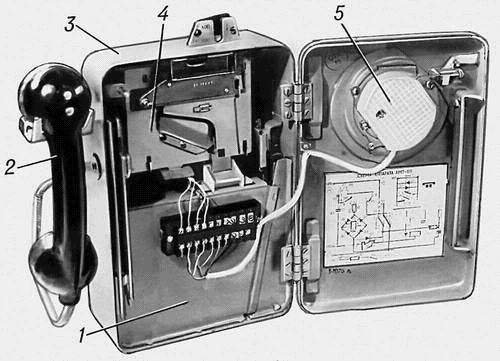
Next picture is most widespread modern payphone TMGS. It uses smart-cards for payment. Also in some places are other types of smart-card payphones, some of them are imported (GNT from Germany, URMET from Italy). 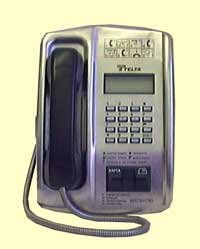
These are samples of telephone signals used in Russia:
The telephone system in Russia experienced rather big changes since 1991, when the Soviet Union disappeared as the state. Practically all the telecommunication systems in the Soviet Union were the state property. Due to the state monopoly and an absence of competition, the service was far from ideal. Most of the people in cities had to wait for a phone line installation for years. In rural areas it was much harder and often impossible because of the state telco didn�t wish to install their equipment in low-populated places with a low profit. It was a kind of a luxury to have a phone in a private rural house. Mobile phones was a privilege of the Communist Party bosses and was inaccessible for an ordinary customer. In spite of all those things, practically all urban and rural houses was equipped by the original telco-based wire broadcasting system. It was intended for receiving from 1 to 3 radio channels with a simple cheap receiver, and the 1st channel was able to receive with the cheapest device (so-named �radio-point�) containing only a speaker, a transformer and a volume control, without need of any additional power source. The reason why the telco gave the much attention for the broadcasting service was the civil defense. The wire system is able to function at the hard conditions such as air radio interferences and a power failure at the customer�s location. Now the things are quite different. The former state monopoly has been divided by regional telecoms, most of them are joint-stock companies. In most cities we have a bunch of independent companies which provide a phone service, the Internet access and other data transfer services. The companies created at the base of the former state monopoly (so-named �the traditional operators�) serve most of the clients who use only the phone and don�t need other services like fast access to the Internet. The companies found after the monopoly dividing (�the business operators�) serve most of business and other clients who need the fast high-quality digital communication. The traditional operators have a lot of old equipment, such as Step by Step and Crossbar exchanges, in-band signaling long-distance trunks, wire broadcasting systems and so on. Now they are installing new equipment mostly in rural areas where there has never been any service. That�s why some villages have the more advanced digital equipment than huge cities. For example, there are a few old Step by Step exchanges in Moscow. The business operators have only the modern equipment. But they work only in cities and they neglect low-populated areas. For instance, my small town is located in 36 km (20 miles) from huge St.Peterburg city. Here is perfect voice telephone service provided by the traditional telco �Lensvyaz�. But the access to the Internet is available only by dialup connection. DSL or other fast access is unavailable. As for cellular phones, now we have two nationwide mobile operators, �Megafon� and �MTS� (�MobileTeleSystems�), and a bunch of small regional operators. The most widespread mobile standard is GSM, also some of operators use the old standards NMT-450 and AMPS. The newest CDMA standard is being started too. Due to the hard competition, the cellular fees dramatically fell during lasted a few years. The cellular phone was the attribute of rich businessmen or �Big Bosses� in late and middle 1990�s. Practically any average urban citizen is able to use it now. Since the times when the cellular phones was expensive, people have many long range cordless phones. Particularly a large quantity of them is at the Eastern and Northern parts of the country. The roofs of buildings in Magadan or Tumen cities are the great illustration, they have been covered by the radio telephone antennas. Most of those phones have been smuggled from Taiwan or China. They work on unapproved frequencies and their using is very unsafe. My neighbour had one which worked directly on the FM radio band. When I tuned my Boom Box I was able to hear all his conversations! The great thing being made now is the installation of new modern public payphones. Most of them operate with smart cards and allow to call any local, national or international number. Most of old payphones were able to make only the local calls. Another interesting thing is a phreaking. As I wrote, some of traditional operators still have old in-band signaling trunks in use, besides of digital PCM systems, fiber optic cables and microwave antennas. That�s why the die-hard phreak has all chances to find a channel for the blue boxing. For instance, about 10 percents of the channels which connect my town to the rest of the world, are breakable. Because of the equipment selects the channels randomly, one of 10 attempts to box can be successful. Anyway the blue-boxing is quite rare kind of the phreaking in Russia. There is more easy and �dirty� method, named Gray Boxing. It is based on the substitution of the forged (artificial generated) AON (automatic number identifier) signal instead of original equipment�s signal. The bill will be charged to the phone number generated by phreak�s device. The police often arrests immigrants from Vietnam or China for this kind of fraud. They organize underground offices where another immigrants can make international calls for less fee than legal. This kind of criminal business is very profitable because the equipment for fraud is cheap and easy to obtain. The struggle with this is a hard task for telcos. They have to change all the old equipment if they want to get rid from phreaks fully. The following images are from collectors, international visitors to my web site, and from sellers of telephones on eBay. Some of these phones are unidentified. If you know what model they are, please contact me. Thanks to Arnold Rupp (ATCA #3044) for his descriptions and contributions just added to this section.
Special Contributions of The Netherlands - from Coen Meeder The Ericofon 1966 catalogue! To view each page, click on the page numbers below. All but one of the scans was reduced 50% due to image download times but the full size scans are available from me. The one page that was not reduced was left in its original size for clarity reasons and was rotated 90 degrees.
Ericsson, The First 100 Years:
More poster scans of Ericsson telephones:
The following was sent from a visitor to my web site from Ireland who wishes to remain anonymous: Here is some brief info about Ireland's telephone system and it's history. Irish cities had dial telephones as early as 1920's but most of the rural locations remained manually switched up until the 60s & 70s.
Current Digital Switches (Which cover 100% of subscribers):
The formerly state-owned phone company has gone through a number of name changes over the years. Originally called simply the "General Post Office" as in Britain, then became P&T (Posts and Telegraphs) and then in 1984 became Telecom Eireann and finally, when privatized, became Eircom.
Ireland has used a RJ-11 type connector since
the 70s for all telephones, although the system is not identical to the USA, there are a
number of crucial differences. Various tone signals (supervisory tones) used in Ireland is quite different than the tones used in the USA:
The routing tone (WAV) or routing tone (Real Audio), which Eircom sometimes call a "progress tone": It's sometimes heard when your call is forwarded to another number (not usually, but in some instances.. especially in remote locations. Also in multiple PSTN line set-ups with "hunting" set-up, if all lines are busy it plays that tone sometimes until a free line becomes available. The ODTR (Office of the Director of Telecommunications Regulation) the Irish equivalent of the FCC is amazingly strict on call set-up times, if any company on the market takes more than a couple of seconds to set-up a national PSTN/ISDN call they can face having their network audited! Normally calls just complete immediately with no delay, you hit the last digit and it rings. The Eircom network's is almost exclusively fibre optic. Every exchange is linked into the trunk network with fibre optic cables right down to very small remote concentrator exchanges with < 50 lines. In very remote rural locations digital microwave links are used. The market is fully deregulated although Eircom still retains a monopoly on the final piece of the network, the wires actually coming into people's houses. The cable companies are the only other communication companies who have direct connections to residential customer's premises. This will change very soon however, as the regulator is "unbundling the local loop" so other carriers will have access to providing local loop services to residential customers. This will be most likely be achieved by forcing Eircom to sell capacity on it's local exchanges to other companies should the customer wish to change over. The new company will then take full maintenance responsibility for the line etc .. At the moment customers can pre-select their carrier for local and long-distance/international calls and can also use a 5 digit prefix to select a carrier for a particular call. You dial 13+XXX+number required where XXX is a carrier's code. Even directory assistance (information) is fully competitive, with about 5 different providers at the moment. You simply dial the code for the information service you require. It always starts with 118 XX. The "Call Management services" have codes very different than the USA too - for example:
When you hear the "beeps" For a conference call: Dial the first number, when they answer press R dial the second number, when they answer dial R3 and they're all connected together.. again you can use R2 to switch between them etc...
This section was contributed by Arctus arctus@phreak.be who lives in Slovenia, a former part of Yugoslavia (independent since 1990). He is a founder of Phone Losers of Slovenia (page is in Slovenian language, sorry) . Number
error - Sound that is played when
you type a wrong combination of tones. Either it's the unexisting
phone number of several * / # tones.
We have 4 mobile (actually 3) phone operators.
The first ever to offer mobile services was Mobitel (once a part of Telekom).
Then we have Si.Mobil and Debitel (Debitel is hosted within Mobitel network) and
Vega. Vega is new mobile phone operator which was introduced to Slovenia in year
2002 by Western Wireless International. More people own a mobile phone than a
static one. Almost every child aged 10 owns one. We (Phone Losers of Slovenia) now collect as much information as possible about how the phone system here works. Once I published on our homepage 10 access codes of lawyers' answering machines. The information was so sensitive that even a TV station mentioned that in the news report! I also wrote a program called SMS Bomber that bombs GSM telephone users with SMS messages. This program was also documented on the TV. This TV station called POP-TV made 2 reports on Phone Losers of Slovenia (one day after another). I guess we are pretty famous by now. We are active for more that a year now. PBXs and VMBs are another topic that is yet to be fully discovered by us. Our telco is aware of us and I don't believe they ever expected a group of people like us would be gathered. We are lucky that we are not so advanced yet, so we can manipulate with phones a lot. I dislike the young people's lack of interest in phone systems and phreaking in our country. There aren't many interested in phones, just a few of us. I miss the true phone phreaking spirit that was present in the late 70's and 80's in America. I read about that in books. People here do not have a desire to discover something new, something out of nothing. They just want to make free phone calls and are not interested in how a free phone call is made. Phone Losers of Slovenia also publishes Slovenian Phone Phreaking Bible which is in Slovenian language and contains all the information about our phone system in one place. You need a password to enter this area so the Telco cannot view it's contents. Here are some additional image files sent by Arctus: eurochip.jpg - Smartcard cards (Generation 2 - SLE4436-Eurochip), 50 impulses. Note that Christian symbol. telekom_100imp.jpg - Old smartcard cards (Gen. 1) which were hackable, 100 impulses. mobitel.jpg - Prepaid card for mobile phones of value 1000 SIT for Mobitel sim cards. Each card holds a unique 13-digit number on the back side which users type into their phones to transfer credit into their account. There are also cards of 2.500, 5.000 and 10.000 SIT in circulation. si_mobil.jpg - Prepaid card for Si.Mobil mobile operator sim cards. This card is basicly the same as Mobitel's expect for a difference in 14-digit unique number. telekomhq_lj1.jpg & telekomhq_lj2.jpg - Telekom Slovenije (Telekom of Slovenia) headquaters in Ljubljana. See the logo in the first photo. Iceland - The following section on Iceland is from a web site visitor, Halli: In Iceland we have few telephone companies. There are only 275,000 people who live in this country and there is one big phone company and 3 or 4 smaller. The biggest one started early in 20th century but we had some kind of telephone communication before the year 1900. They have a website but it is only in Icelandic and a museum. The website is (http://www.simi.is) (simi means telephone in English). I am studying History in University of Iceland - From Iceland, Halli | ||||||||||||||||||||||||||||||||||||||||||
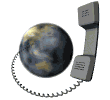
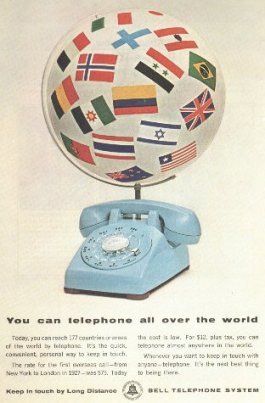
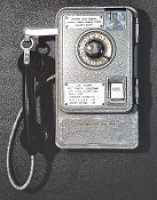
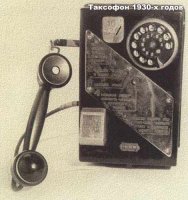
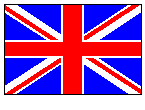
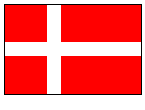
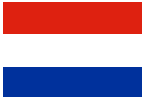
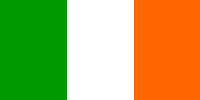
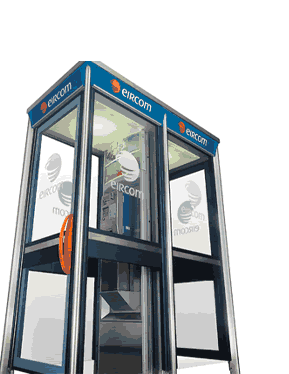
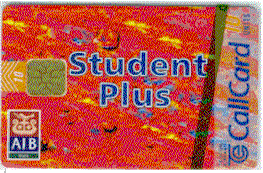
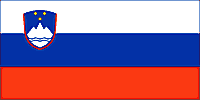 Slovenia Phone System
Slovenia Phone System